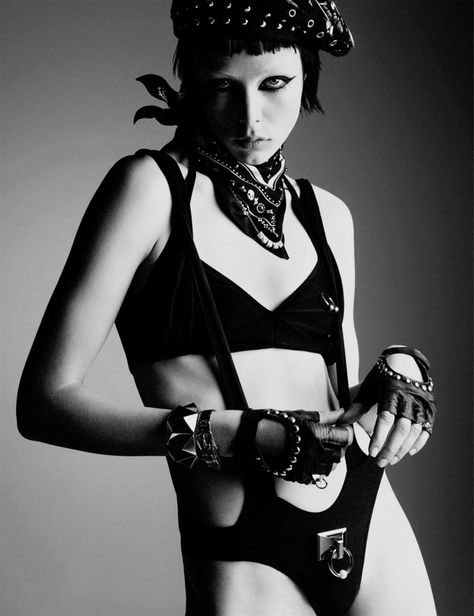High Fever is a photographic story about an eccentric young woman immersed in the electric chaos of Friday night city life. Clad in a skimpy, 1980s-inspired wardrobe that amplifies her raw sex appeal — think strong makeup, a worn denim jacket, fishnet top without a bra, leather belt, silver jewellery, thong, fishnet stockings and above-ankle boots — she struts through the night with defiant confidence.
The camera follows her obsessively, like a voyeuristic shadow. Her journey begins at a tube station and spills out onto the streets, weaving between revellers. She chats with strangers, smokes, flirts, grabs a drink, and eventually ends up in a late-night McDonald’s for a greasy bite. All the while, she’s hyper-aware of the camera’s presence — teasing it, taunting it, toying with it. She twerks, flashes glimpses of her bust, and dances with the line between exhibitionism and control.
Finally she enters a grimy public loo. She stares into the cracked mirror, the camera still behind her — but suddenly, in the reflection, the “stalker” is visible for the first time. And it’s her. Smiling.
The imagery is intentionally distorted, capturing the fever dream of nightlife through a blurred, unreal lens. Shot entirely in black and white, High Fever is a visual tale of pursuit, seduction, and the hypnotic pulse of the city after dark.
The imagery is intentionally distorted, capturing the fever dream of nightlife through a blurred, unreal lens. Shot entirely in black and white, High Fever is a visual tale of pursuit, seduction, and the hypnotic pulse of the city after dark.
Reference:









